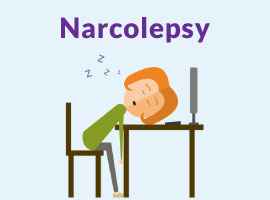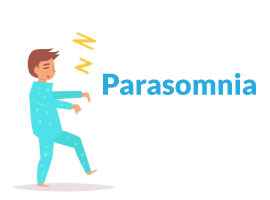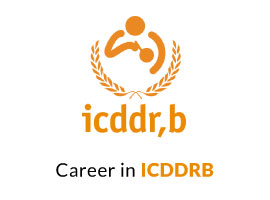How is the path goal theory of leadership applicable in today's business world? Well, the overall tour of this article will put light on this fact. You know what; this theory provides a comprehensive framework for understanding the role of goals in employee performance. In fact, it usually lies on a solid assumption. It means that goal-directed behavior depends on people’s ability to understand and anticipate their future needs.
Moreover, their ability is to use these needs to make strategic choices. In addition, this theory argues and shows the best way to understand the leader's effect on subordinates. Certainly, the uttermost way is to focus on a leader’s ability. In this way, he or she can accomplish his or her goals. Therefore, we will try to enlarge this theory with a view to getting more insights about it.
Path Goal Theory of Leadership Definition
Firstly, we must grab a clear picture of this theory. You know what; it is a motivational theory which also known as goal-setting theory. Precisely, it explains the leader’s motivation, interpersonal behavior, and perception. According to this theory, leaders are made or not made by the followers they lead. In fact, you may observe there are three main components of this theory.

In the beginning, leaders create a desired future for their followers. Secondly, they motivate their followers to achieve the desired future. After that, they control and regulate those who have achieved their goal. In this point of view, you can frame it as a functional model. You know what; this model explains how individuals, teams, and organizations plan and achieve goals.
In other words, this theory builds on the idea that we choose our goal when it helps us achieve our primary path goals. Perhaps, you may have ever tried to reach a goal by doing what others thought was important. In this case, you will experience conflict between your personal and organizational goals. Therefore, this theory has grabbed a crucial position in organizations for advancement.
Application of Path Goal Theory of Leadership
Well, we have stepped into another crucial part of this content. Here, learn the overall application of this theory in organizations. Most importantly, we know that it is an approach that emphasizes the importance of followers' reasons for serving their leaders. For this reason, this theory has been helpful in understanding how people behave towards their leaders.
You know what; we have conducted a study to determine the application of the path goal theory. Here, the theory was applied by calculating expected and actual path goal values. Besides, we have considered the time-by-level interaction coefficients, among other variables deeply. After that, a statistically significant result was obtained. Now, we have data accurate application of this theory. Let's have a look at the next lines.
• Applied to Overcome Challenges and Achieve Goals:
Path goal theory is a model used to identify the actionable steps that are necessary to move an individual towards their desired outcome. Using this theory, we can identify the obstacles and challenges an individual will face. Besides, they may set out a path towards their goals.
You know what; goal setting is one of the most important aspects of personal development. When we are successful, we can observe how the specific goals that we set ourselves motivated us to achieve them. In this case, this theory shows a path to stick to our goals.
• Used to Enhance Support Network:
Now, we will explore another application of this theory. Actually, it helps people to attain personal goals by identifying the goals that are important to them. Besides, it is also used in social networks to describe how people interact and influence each other. A new study revealed that path-goal theory can enhance support networks to help us in developing a positive social life.
Moreover, it provides a theoretical basis for what happens to people when they start to care about the goals of others. Besides, it states that people’s support networks can be strengthened. It happens when they adapt themselves to and consider the goals of their friends, family members, and associates.
• Applied to Boost the Employee’s Productivity:
People who set their goals in a way that they can reach them using the best path will be more productive. In fact, it is commonly known that people get distracted easily. Suppose, you are working with team members and your goal is for everyone to achieve it together. In this case, you are much more likely to achieve it.
However, the employees who are engaged in their work, and have a clear sense of their goal are more productive. You know what; this theory helps employees focus on the things that matter most. Thus, it ensures more engagement of the employees and boosts their productivity.
• Initiated to Set Functional Environment:
The Path-Goal Theory is a theoretical framework. Here, it states that the goal-setting of an organization can be viewed as a function of two factors. For instance, these factors are the path and the goal. You know what; the path is a combination of work roles, goals, and other activities in which an individual engages.
On the other hand, the goal refers to an individual's subjective perception of his or her contribution to organizational goals. The most exigent thing is that this theory clearly explains how we work. Here, the factors are contingent on the functional environment of an organization. In this case, the path-goal theory assists in setting such a functional condition.
Path Goal Theory of Leadership: Strengths and Weaknesses
When looking at a theory, one must consider its strengths and weaknesses. A good theory will be able to provide the most logical explanation for phenomena in the field of study. In this sense, we can justify the path goal theory to grab a comprehensive mood of the action. You know what; as a good theory, it should have some specific predictions about how its variables behave.
However, the path-goal theory of leadership is a collection of ideas about how leadership can work. Through this theory, the leaders can set better working conditions and bring out the best efforts of the employees. Sometimes, however, this theory can be proven wrong when they turn out to be incorrect. Let’s take a look at some strengths and weaknesses of this theory.
Strengths:
• Expedient Theoretical Framework:
Firstly, the path-goal theory is a useful theoretical framework that can help us understand people’s intentions, actions, and outcomes in social interactions. Besides, it seeks to help leaders identify their goals and then use them as a guide for behavior. Therefore, it is also known as goal structure theory.
You know what; this theory is a perfect theoretical framework for leaders. This theory will give you an idea about the kind of behavior you should adopt to become a better leader. According to the path-goal theory, leaders set the course of their followers' actions by establishing a preferred direction. Besides, the actions come measuring progress toward that goal.
• Perfect Course of Motivation:
In this post, we look at this theory, which is used to explain the relationship between goal achievement and motivation. Previously, motivational theories have long been in use. Only recently, the experts are trying to measure and identify the relationship between motivation and goal achievement. After that, they got certain proofs in favor of path-goal theory.
You know what; goal setting is a core management practice. It has been around for decades, is often thought of as a simple process. Here, this theory suggests that by setting specific goals and making progress towards them, leaders can motivate their employees effectively. Thus, people can improve their ability to accomplish more and achieve their full potential.
• Practical Model:
Primarily, this theory states how leaders influence people. It provides a model for understanding and predicting the behavior of individuals and teams. Most importantly, it is a practical model of goal attainment. In the goal attaining process, it crosses five steps.
Firstly, this theory establishes a clear and comprehensive goal. Secondly, it sets specific, measurable objectives for your goal.
Thirdly, this theory determines the steps you must take to achieve your goals. However, the steps are still to be continued. As the fourth step, it takes these actions step by step until you reach your goal. Finally, the theory makes you capable to celebrate the achievement of your goals.
Weakness:
• Complex and Confusing:
The path-goal theory is often considered to be a complex theory and difficult to apply in practice. As a result, the results of path-goal research are often not interpreted correctly or used appropriately. Thus, it can create uncertainty in the course of action of the employees.
You know what; the research of path-goal theory has led to some conclusions that have had a huge impact on leadership development. However, the findings of this theory can be complicated for people to understand. Here, the leaders have to carry an exigent part to clarify every aspect of the findings.
• Inefficient in Defining the Leadership Roles:
One of the most apt ways that leaders make a difference in an organization is through their leadership behavior. Leaders use their authority to create certain expectations for their employees and then try to live up to those expectations. In fact, the leadership behavior of managers, in particular, their use of rewards and punishment is a critical component.
Although leadership behaviors are important for employee motivation, this does not explain why there is a relationship between these two variables. Therefore, the path-goal theory does not adequately explain the relationship between leadership behavior and worker motivation.
• Only One Way Event:
The path-goal theory suggests that leaders are in the driving seat. It states that leaders drive the organization to achieve its goals and, subsequently, they lose control of their own destiny. Besides, it also tells us that leaders should have a clear vision of the goals to achieve. According to this theory, the best way to become a leader is by trying to live out your goals.
Moreover, the goal-setting process should involve those who have a vested interest in the success of the enterprise, such as employees and shareholders. But, the weakness of the path-goal theory is that it treats leadership as a one-way event. In fact, it does not take into account the impact of leader behavior on followers.
Famous Leaders Who Use Path Goal Theory
Leaders that thrive on accountability, respect and trust are at the top of their game. Those who struggle to make things happen can be quite erratic, which creates a lack of trust within their team. This article will list out famous leaders from various industries that use path-goal theory to inspire their teams. In fact, these leaders did a great job in leading their subordinates towards successful goals using this theory.
Firstly, the name that grabs the uppermost priority is Tim Cook. You know what; Cook is the CEO of the most valuable company in the world, Apple. The tech giant is built on innovation and is one of the greatest success stories in business history. Here, he has successfully applied path-goal theory and led the organization towards the goal.
In the next position, we can name the most famous business leader, Jack Ma. Jack Ma is the Founder and Executive Chairman of ALIBABA Group. He is also one of the most prominent business leaders in China. It has grown from a small internet-based enterprise to a global powerhouse. His unique way of thinking and planning for his business is the reason for this achievement. From the beginning, Jack Ma has used this path-goal theory in this organization.
Path Goal Theory of Leadership Examples
When you look at a leader, do you see the ability to influence others through their vision and ideas? Or do you see someone who can inspire others? Regardless of your answer, there is no doubt that great leaders have many attributes in common. You know what; a path-goal leader is someone who sets his or her own goals and inspires others to achieve them. This person is an example for many people at all levels of management.
In other words, path-goal leaders are strategic thinkers who lead their organizations with clarity and conviction. Besides, they are courageous and seek out opportunities to disrupt the status quo. Their quest for growth is not motivated by money, but by a desire to change the world in which they live.
In this case, we can name Steve Jobs as the perfect example path goal leader. Actually, he has incorporated path-goal theory effectively. Therefore, he is still a revered figure in the world of business. Steve Jobs is a masterful example of a leader who has successfully taken an idea to market.
Conclusion
Hopefully, we have developed a way to understand and apply the path goal theory of leadership in organizations. You know what; this approach allows us to look at leaders as individuals who not only act but also think. Thus, this fact makes them unique within their environment. In addition, the process of application of this theory starts with understanding what leadership means truly. Most importantly, this theory will help the leaders by showing the right way of achieving the goal.








